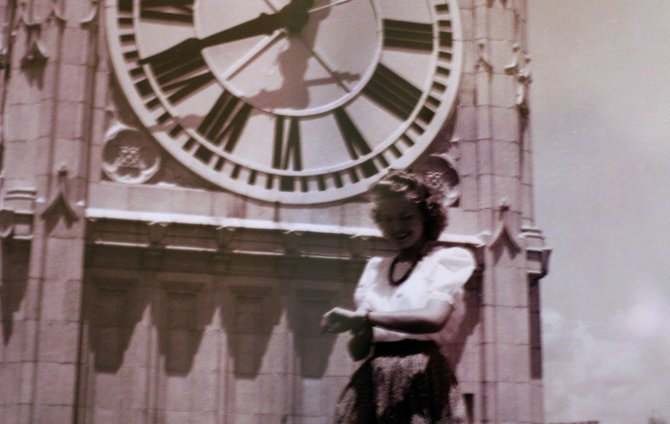This is the last weekend to catch “Jackson: A Photographic History” at the Old Capitol Museum. Photo by Jessica King.
From the Civil War to civil rights and beyond, the Old Capitol Museum offers Mississippians a rare visual retrospect on the complex past of the capital city with "Jackson: A Photographic History." The exhibit, which launched March 12 and will run until July 7, contains a comprehensive collection of pictures from the Mississippi Department of Archives and History, covering more than a century of Jackson's greatest achievements and gravest hardships.
"I think this reminds us of where we've been, how far we've come, and what we can still become," says Mike Stoll, the education historian for the Old Capitol Museum and the person responsible for the collection. "Jackson is a city that always had a lot of potential. It had a solid past in terms of the prosperity of its people, but it also had a dark side."
Jackson's darkest days can be found in some of the photos in the collection, depicting the most dangerous and turbulent times for the state capital, including photos of massive civil-rights demonstrations, devastating natural disasters and the early demise of Mississippi landmarks.
"The aerial shots that we have are interesting because they show just how extensive the damage was to Jackson, like in the Easter Flood in 1979," Stoll says. One of the single most destructive occurrences in Mississippi history, the flooding of the Pearl River, left much of Jackson underwater and resulted in around $500 million in damage and nearly 15,000 displaced citizens.
Another example of the few haunting historical disasters that the exhibit presents is the destruction of the Bowman House, a four-story, hundred-room hotel destroyed in the Civil War, not by enemy bombardment or a hail of bullets, but by a simple fire.
"The Bowman House would have been on the corner of Amite Street and State Street and was used as a headquarters for both the northern and southern officers at times during the Civil War until it was burned down by accident in 1863," Stoll says. The photograph, taken in 1869, shows the Bowman in utter ruins. "For photos like these, it's not always what's in the picture; it's about the story and people behind it."
What "A Photographic History" accomplishes best, Stoll says, is providing visitors with a sense of the incredible differences in form that Jackson has adopted throughout the years. "There are obvious differences, of course, like the dirt roads that the city was built around in 1800," Stoll says, "but more than anything, it shows how we've grown. We see features of the city's historic sites and familiar landmarks change. Then, you find a modernized Jackson, with paved roads and electricity, and places like the Lamar Life Building skyscraper, which, at the time of its creation in 1929, was one of the largest reinforced concrete structures in the world."
"Jackson: A Photographic History" is peppered with such century-long transformations and for Stoll, this element makes the collection most interesting. "We have early photos from the University of Mississippi Medical Center with only around 300 beds," he says. "Now, they have over 9,000 employees and represent 10 percent of the economy for the Jackson metro area. We also have photographs from the building of the Mississippi Coliseum, which actually sits 2,000 feet above Jackson's extinct volcano."
Stoll says that visitors to the Old Capitol Museum's newest attraction can expect "a better appreciation of what has happened and what our city has. Jackson is more than a small, southern state capital. You get an understanding that our city was once extremely prosperous, and with the knowledge that comes from considering our past, we can be prosperous again."
The Old Capitol Museum (100 S. State St., 601-576-6920) and "Jackson: A Photographic History" are free to visitors of all ages and open Tuesday to Saturday from 9 a.m. to 5 p.m. and Sundays from 1 to 5 p.m.


